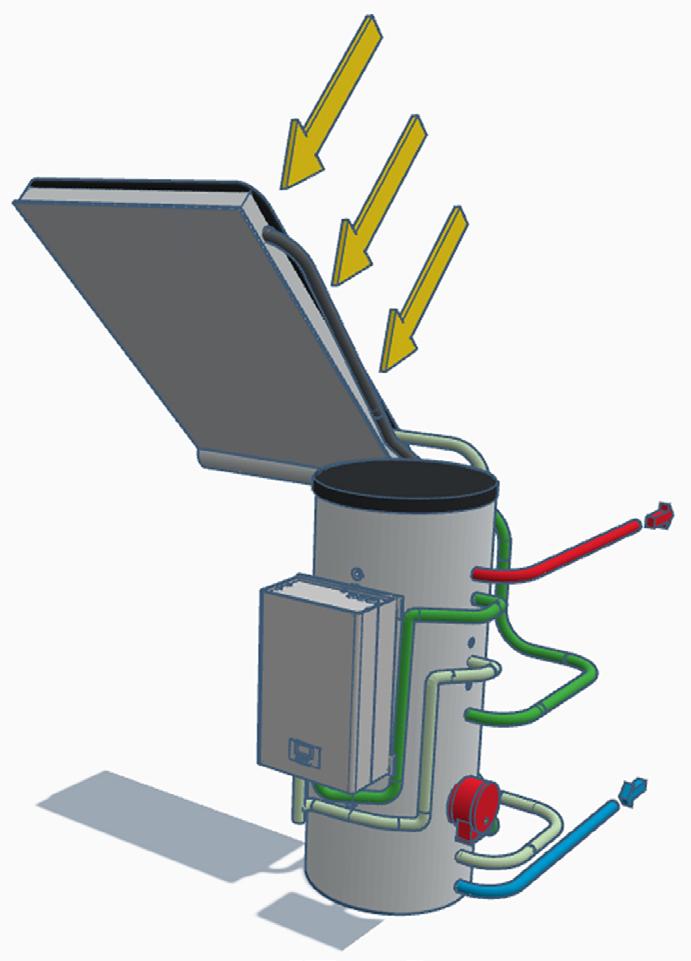
3 minute read
Solar thermal: Reducing energy demands to cut carbon & costs
Capable of offsetting typically around 30% of the energy demands for water heating, solar thermal systems are ideal for organisations which rely on large amounts of domestic hot water (DHW).
Modular, high-performance flat plate collectors with integrated solar fluid (glycol) drain back are by far the most efficient way to heat water with solar energy. The solar fluid transfers solar energy as heat to the collector’s meander absorber to system water via an indirect cylinder. Drain back prevents overheating damage and increases a system’s lifespan. Together this offers a smaller footprint compared to equivalent solar photovoltaics (PV) for DHW. A typical 4 kW PV system requires approximately 16 panels covering 25m2 of roof to match just three flat plate collectors covering just 6.6m2 roof area. This makes solar thermal a prime choice when roof or façade space is limited.

For existing buildings with gasfired water heating solar thermal is employed as a system pre-heat, reducing demands for gas to actively cutting carbon emissions from the buildings. Commercial new build and refurbishment however are either mandated or opting to shift to direct electric which remains substantially more expensive to operate than gas – currently by a factor of 3.8. This has driven interest in hybrid approaches which harnesses solar thermal preheat. Necessary after heat is simply secured with a packaged Adveco FUSION E electric water heating system combining an electric boiler and cylinder.
The hybrid approach can be further extended with the inclusion of air source heat pumps (ASHP) to provide the initial pre-heat for the system. Operating at lower temperatures with the cold feed maximises the efficiency of the heat pump, reducing electrical operating costs and raising working flow temperatures from 10°C to 40°C. This is not hot enough for commercial applications, so the pre-heated water is then passed to the mid-solar thermal system to boost the working flow temperatures to at least 50°C. Although not operating at maximum potential, there is enough advantage gained from solar thermal to warrant the additional system complexity and capital investment.
During summer months it is possible for the ASHP and solar thermal system to deliver the necessary 60°C working flows. But to ensure safe, consistent, and necessary high operational temperatures, the water is passed to the FUSION electric water heater. Here final consistent water temperatures of up to 65°C are assured year-round.

To date, Adveco has designed and supports more than 800 live solar thermal systems across the UK and such hybrid approaches are unavoidable if commercial projects seek a sensible, practical, and cost-effective path to lowcarbon hot water.
https://adveco.co
https://adveco.co/products/waterheating/solar-thermal/










